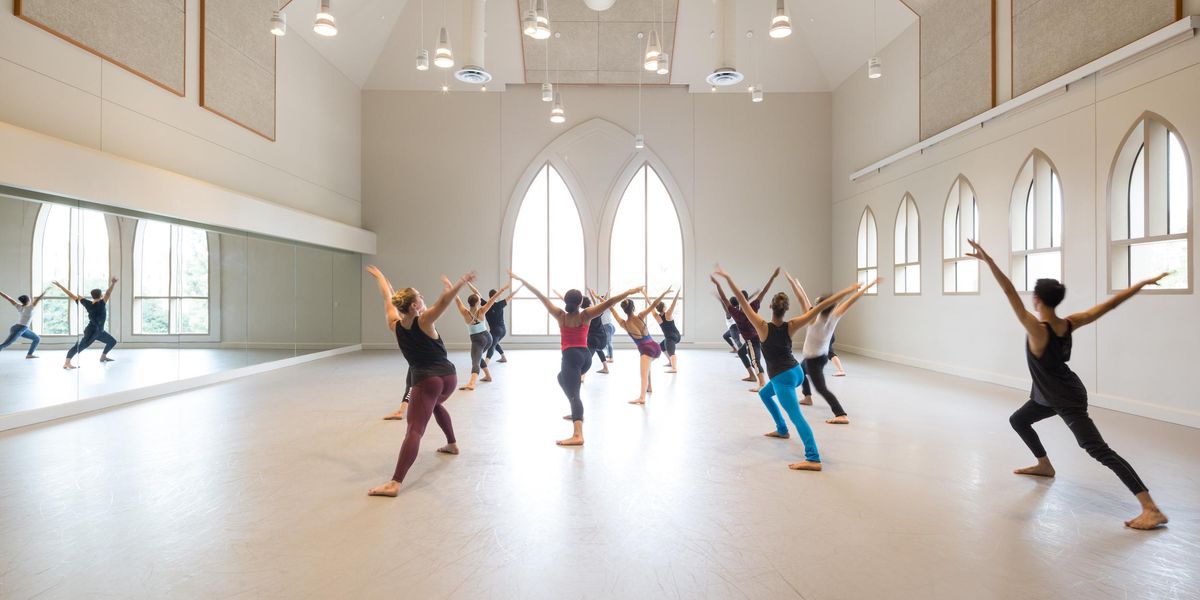Technique My Way: Christine Schwaner
Unleashing her power through Pilates
Christine Schwaner with Luca Sbrizzi in Bournonville’s
Flower Festival. Photo: Aimee DiAndrea, Courtesy PBT
Pittsburgh Ballet Theatre principal Christine Schwaner is the ballerina little girls dream of becoming. During an afternoon rehearsal in a nearly empty studio, Schwaner’s presence makes the room glow. With each step of Bournonville’s meticulous pas de deux from Flower Festival in Genzano, the pint-sized Brazilian draws you in with her easy movement, expressive eyes, and bright smile. A self-proclaimed bunhead, Schwaner came to the United States at 17 to compete in the International Ballet Competition, where she was offered a contract with Cleveland Ballet. In 2006 she joined PBT with her husband, soloist Alexandre Silva. This season she took her place as one of the company’s leading ladies when she was promoted to principal. In October, her generous performance as Giselle, alongside Silva, was celebrated with sweeping acclaim.
Cross-training for injury
Schwaner’s most serious injury occurred December 16, 2008 at 1:30 p.m. (she recalls the date and time precisely), when she slipped on the marley and severely sprained her ankle, overstretching her flexor hallucis longus (FHL) tendon. It’s the only time she’s had to stop dancing: two months in the dreaded boot. Surgery was recommended, but Schwaner went looking for other options and found Pilates-based therapy. “You have to investigate,” she says. “Ask people, read about it. You’ve got to be curious in that way because in the end it’s your body.” Three months and zero surgeries later, Schwaner was dancing without pain. “I became a believer,” she says.
Now, Schwaner uses Pilates exercises to warm up, strengthen, and heal. Despite a shoulder injury a few years later, she never missed a step, focusing intently on strengthening the joint. The exercises she learned for her ankle and shoulder injuries have become mainstays in her daily routine to ensure she doesn’t repeat the experience.
Shortly after becoming enthralled with the benefits of Pilates, Schwaner tried Gyrotonics on the recommendation of a friend. “You feel like you’re detangled,” she says of the practice. She now combines the two exercise forms in her weekly cross-training schedule, which is as intense as her ballet studio time. “I think Pilates is great when you first get injured because it has restriction and you just get back to the movement,” she says. “And then the Gyrotonics goes beyond. You reach spots that you say, Oh, my god, I can’t believe my body is able to do that.”
A patient warm-up
It’s fairly typical for a ballet dancer to enter the studio before class and plop straight down into a split or the frog—a habit that doesn’t make sense to Schwaner. “I do not stretch before class,” she says, adding that she doesn’t see the advantage of trying to elongate her muscles before they’re warm. Instead, she relies on Pilates exercises that focus on core strength.
As an avid Pilates practitioner, Schwaner feels strongly that an improperly executed exercise is worse than not doing one at all. “Ballet takes a lot of time,” she says. She advises young dancers to approach their warm-up with seriousness. Every morning Schwaner arrives in the studio at least 20 minutes before class begins to prepare.
Performance prep
While Schwaner relies on Gyrotonics and trigger-point therapy to help keep her body aligned throughout the season, during the week of a performance, she lets the choreography do the work. To perform the specific steps for a certain role, Schwaner acknowledges that you may need to be stronger on one leg than the other—or centered a little more to one side than in your actual center. In order to have the strength required for that particular performance, she allows her body to prepare itself in rehearsal and then takes it easy outside the studio—dramatically cutting back on her cross-training routine.
While Schwaner snacks on nuts throughout the season, the week of a performance she’ll increase her carbohydrate intake just a bit to boost her energy level. She also takes Emergen-C multivitamin packets, since long rehearsal schedules and stress can deplete immunity.
Most important for her performance preparation, however, is good old-fashioned ballet class. While some of her colleagues find that a solid Pilates workout prepares them just as well as a barre, Schwaner absolutely will not miss class before a show. “Even if all I have to do is walk on the stage, I take a class,” she says. “If I had 10 shows a day, I would take 10 classes.” On multiple-show days she doesn’t repeat full class in order to avoid overuse injuries, but she has never found a warm-up that better prepares her for the stage than the first five exercises at the barre.
Kathleen McGuire is a dance writer based in Pittsburgh, PA.
Spinal Strength
Schwaner starts her warm-up the same way every day. The Pilates “cat stretch” engages the spine and back while stretching it safely.
• Start on the floor on your hands and knees, with shoulders and hips square. Your hands should be directly below your shoulders and knees directly below the hips.
• Exhale, pressing your bellybutton toward your spine and pushing down into your hands as you curve your back (like an angry cat). Keep your shoulders down and even. Then shift your weight slightly back toward your feet to feel the stretch in your lower spine.
• Inhale as you release your tailbone, passing through a neutral position, then tilting your rear end up as you lift your head toward the ceiling to create a slight arch. Be sure to lengthen from the top of your head to your tailbone as you stretch and keep your stomach muscles tight. Do not collapse into the flexibility of your spine.
• Repeat six to eight times slowly.




